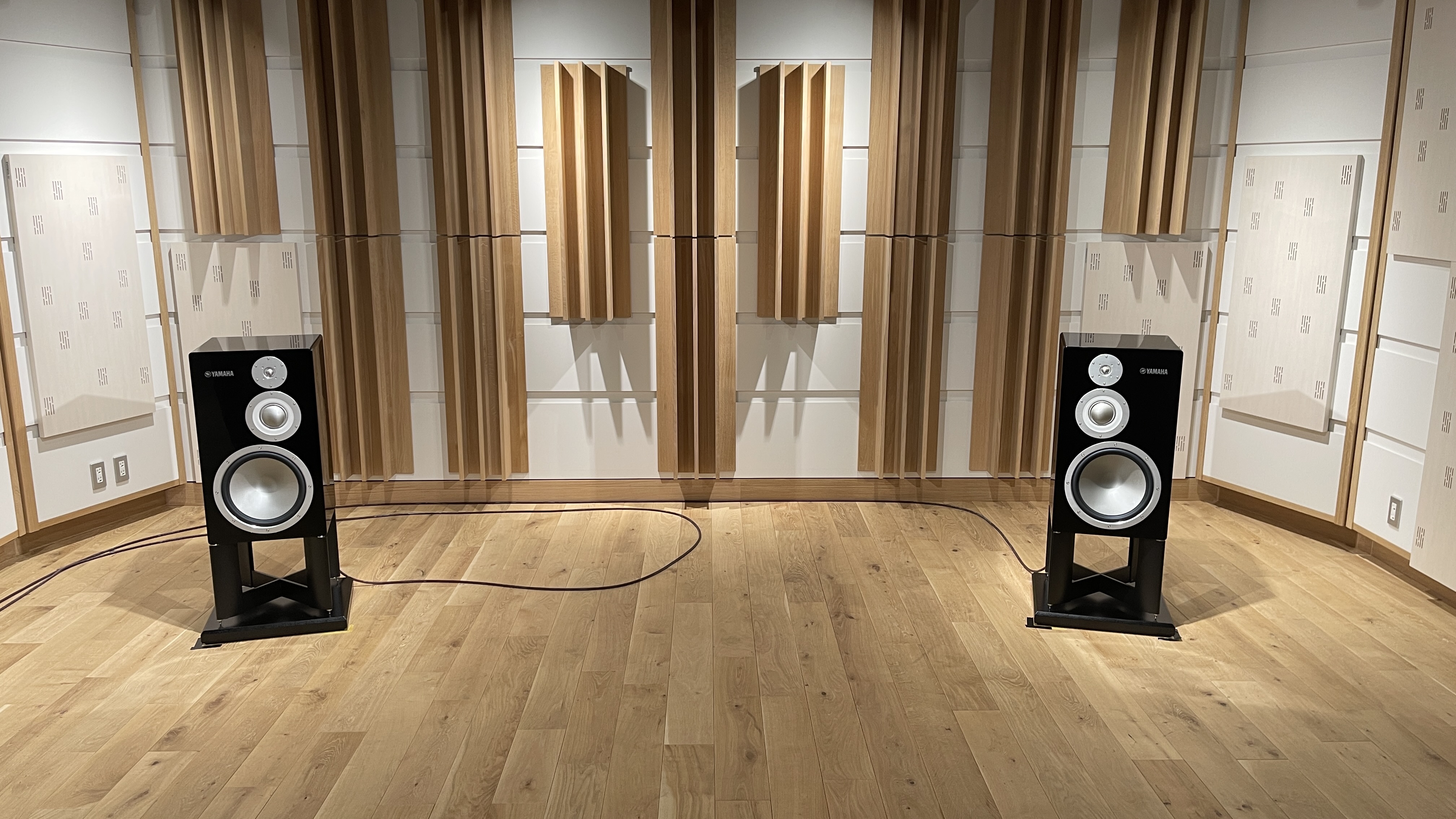How to build the perfect home cinema system
Bask in AV reverie and take movie nights to the next level
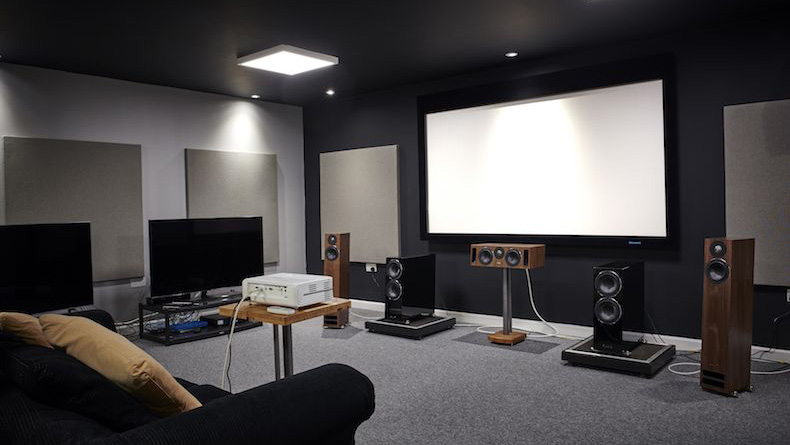
If you, like many writers and artists, very rationally fear the blank canvas when starting a project, you’ll be familiar with that feeling of desperation to execute that first stroke. If that project is building yourself a home cinema, we hope this article can inspire not only your first stroke but also your last, including any shading that is required.
Assembling an awesome AV system – and really getting it singing – is as much concerned with the work you do before you get it as that you do after. It’s pretty easy to buy a bunch of any ol’ kit online, fit it around your bohemian jungle of six-foot houseplants and plug it all in, but if you’re serious about transforming movie nights or, at the extreme end of the scale, replicating a cinema in your domestic space the best you can, taking the time to shape a system with the care you take to shape your Fantasy Football team will pay off in spades.
And, as always, the research starts with setting your budget…
- Two-channel more your bag? Here's how to build the perfect hi-fi system
Set a budget, consider your room
The first step is, of course, to decide on a total budget you’re willing to spend, and then you can start breaking down where that money will go. Do you want a simple TV and soundbar combo? In which case, you need to budget for those and little else. Or do you want a more sophisticated projector-led system with an AV amplifier and speaker package? In that case, you will need to consider extras such as a screen, speaker cabling and, if your speaker package includes standmount speakers, perhaps speaker stands or wall brackets.
Will you be streaming and watching solely live broadcasts, or will you require a source, such as a Blu-ray player or games console, to play physical media as well? If the former, will your TV give you access to all of the apps you need (as most modern-day sets do) on a nice, clean interface, or will you require a separate video streamer to plug into it?
There is no hard and fast rule for how much you should spend on each component, but you’ll be doing your speakers a disservice if they cost 20 times the amount of your amplifier, and vice versa. As a rough rule of thumb, the speaker package should cost at least double the price of the amplifier, while a TV is likely to cost significantly more than an appropriate soundbar. We often put pairing suggestions that we know will work (because we’ve tried them together) in our reviews, or you can skip to our ‘the best home cinema systems you can buy in 2024’ section below to see some examples of recommended systems we’ve built to see how the budget can be ideally split between components.
If you’re going down the multi-speaker setup route, you’ll also need to decide how many speakers that budget needs to pay for. This is why it’s good to get the tape measure out early, because knowing the dimensions of your room – as well as the space you have from each wall – is vital to finding the right package.
Indeed, just because your AV amplifier has 11 channels doesn’t mean you need to use them all. The best packages offer a broad, immersive soundfield with a traditional quintet of cinema speakers (and a subwoofer or two), so don’t attempt to fill your room with boxes only for them to get in each other’s way physically and, more importantly, sonically.

That said, 'height' channels are another consideration if you want to enjoy Dolby Atmos or DTS:X audio – more immersive and height-inclusive mixes than the Dolby Digital 5.1 and DTS Digital Surround formats offer. Some manufacturers now produce floorstanding speakers with built-in upward-firing drivers to deliver these height channels or, more commonly, offer separate modules (sometimes referred to as 'Atmos toppers') that you can simply place on top of speakers. But if you have the budget, space and, importantly, the desire, you can place your 'height' speakers in the ceiling for the ultimate effect.
Equally, with soundbars, if you want to experience Dolby Atmos in a more practical – albeit compromised – way, you’ll need a decent budget for a ‘bar with proper upward-firing drivers; perhaps even a soundbar package that comes with some satellite speakers too. As good as it might be for the money, don’t expect a modestly priced, single-bar Dolby Atmos soundbar such as the Sonos Beam Gen 2 to convince you that sound is coming from every direction; it’s hard enough for the very best and priciest Dolby Atmos soundbars to do that.
If you really want a proper 'sound is everywhere' effect from a solution smaller than a traditional speaker package, perhaps a soundbar package with extra satellites, such as the LG S95QR and Samsung HW-Q990D (below), is the route to go down.
Either way, though a well-mastered Atmos soundtrack can really elevate a piece of cinema, it is much more important to get the rest of your home theatre system right first. So if your budget doesn’t quite stretch to accommodate extra (height) channels, it’s best to consider this a future upgrade rather than skimp elsewhere.
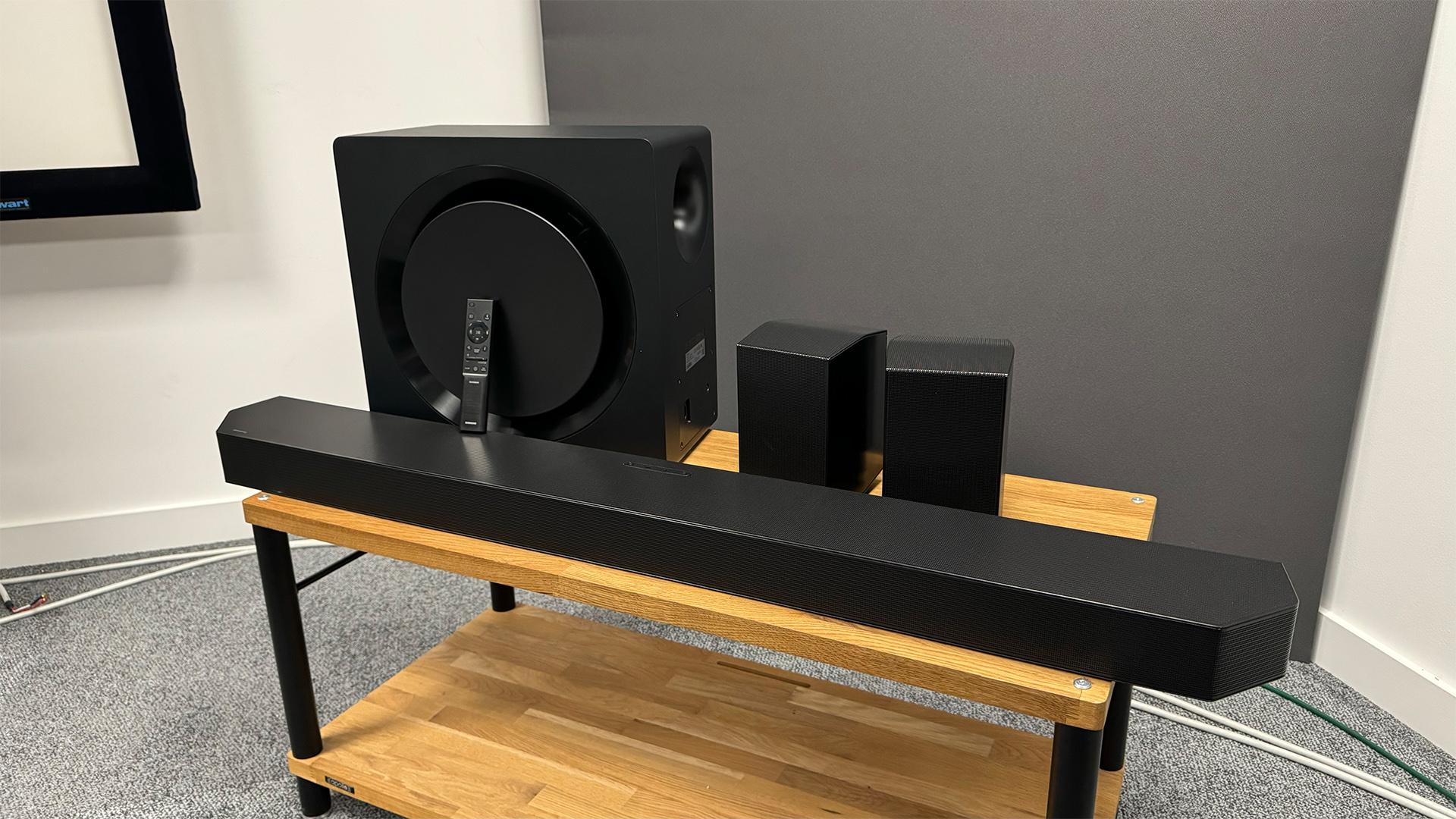
As well as the number of speakers you can accommodate, the size of your room may also dictate whether you should be looking at floorstanding or standmount speakers, or a combination of the two. This isn’t really about the footprint of the speaker – when you add stands to the latter, which is paramount, they are likely to take up pretty much the same amount of room – but how much space they have to breathe and the power you can offer them.
Some speakers are much fussier than others with positioning, too, including how far away they can be from a wall. Many smaller speakers can lose their sonic body being too far out into the room, for example, while others will close up altogether with their backs up against the wall.
As you might imagine, a soundbar – even a larger Dolby Atmos soundbar – will be easier to accommodate, though that doesn’t mean you should have one teetering on the end of your TV stand. The speakers need a solid footing to perform properly, and if they come with a separate subwoofer you’ll get optimal performance if you position it as close as possible to the actual soundbar. We’ll get to soundbar setup shortly.
TV or projector, soundbar or speaker package?
If you have the space and the budget to accommodate an all-singing, all-dancing home cinema setup, you may want to go as close to the cinema experience as possible, which means a projector, AV amplifier and more speakers than you have light fittings. In other words, wall-sized images and enveloping, cinematic sound. Movie nights will never be the same again. But you should be aware of the complexities involved in setup compared to a simpler TV and soundbar pairing – more cabling, longer set-up processes and potentially less satisfaction in a well-lit room, for example. And you may not always gain in every aspect.
For example, in terms of picture quality, you generally have to spend considerably more to get a projector of the same quality as a TV. That said, budget speaker packages will typically be much more immersive and sophisticated-sounding than a similarly priced (or pricier, even) soundbar. And while projectors once offered significantly larger pictures, the rise of cheap TV giants such as Hisense and TCL means that TVs can offer 75-inch+ screens comfortably for three-figure sums – though you won't get premium screen tech such as OLED for that money.
Perhaps a TV with an amplifier and speaker package would suit you better? A projector with a soundbar seems far less appealing, mind you.
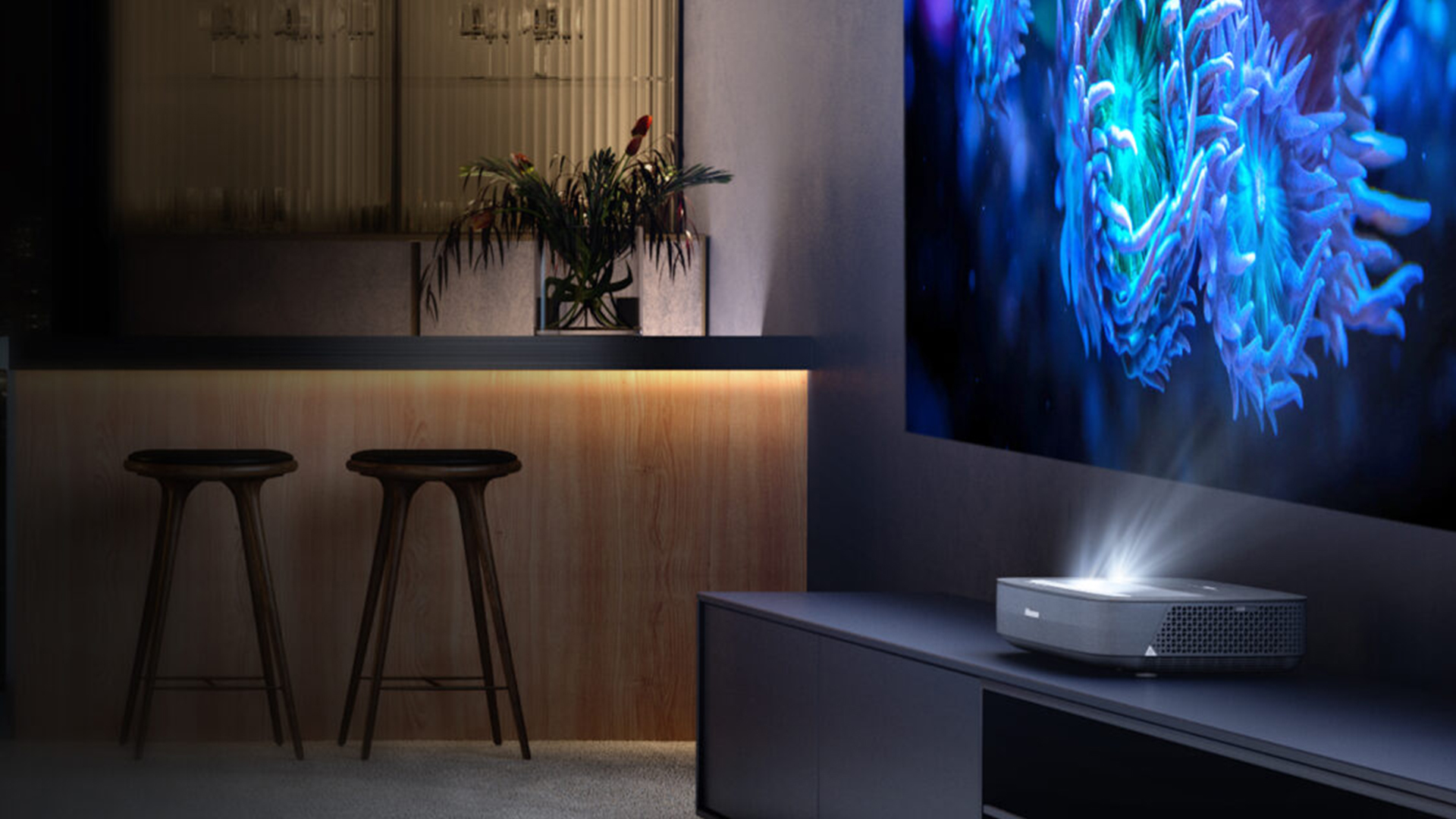
Our UST (ultra-short-throw) projector vs big TV comparison sheds light on the pros and cons of each option, and many of those apply to the telly vs ‘standard’ projector debate too.
A TV and soundbar will be all most people can practically accommodate in their living rooms, whether one or both are wall-mounted or simply placed on a TV rack from IKEA – and that’s more than fine. While TVs used to be unwieldy things that could get nowhere near the quality of a projector, and soundbars have spent most of their existence as pretty crude TV boosters, the quality of both has come a long way in recent years. You can now spend thousands on either component and get a seriously good-quality AV experience that doesn’t feel like too much of a compromise on a full-package solution.
System matching is crucial
This section only really applies to home cinemas with speaker packages, as soundbars and TVs are, by and large, less fussy when it comes to synergy.
Getting a suitable number and type of speakers is vitally important for your surround sound system, but equally so is that they complement their partnering kit. It’s about finding a balance where positive traits are showcased and any idiosyncrasies tempered; you won’t want anything overly enthusiastic in the treble, for example, if your amplifier is already a bit bright.
The amount of groundwork you do hereafter is up to you – whether you will consider bi-wiring, how important a certain finish is and so on – but no sooner than you’ve carefully worked out what you’re looking for should you be heading to the showroom to have a listen.
There, you want to recreate your home set-up as accurately as possible – you’re about to be handing a fair wad of cash to this dealer, after all, so they should only be too happy to oblige.
That means taking your AV amp with you if you have one, and any source you’ll be using with it. Even if you’re starting from scratch, make sure you have some films you know well to test with, else you’ll never know properly what you’re hearing.
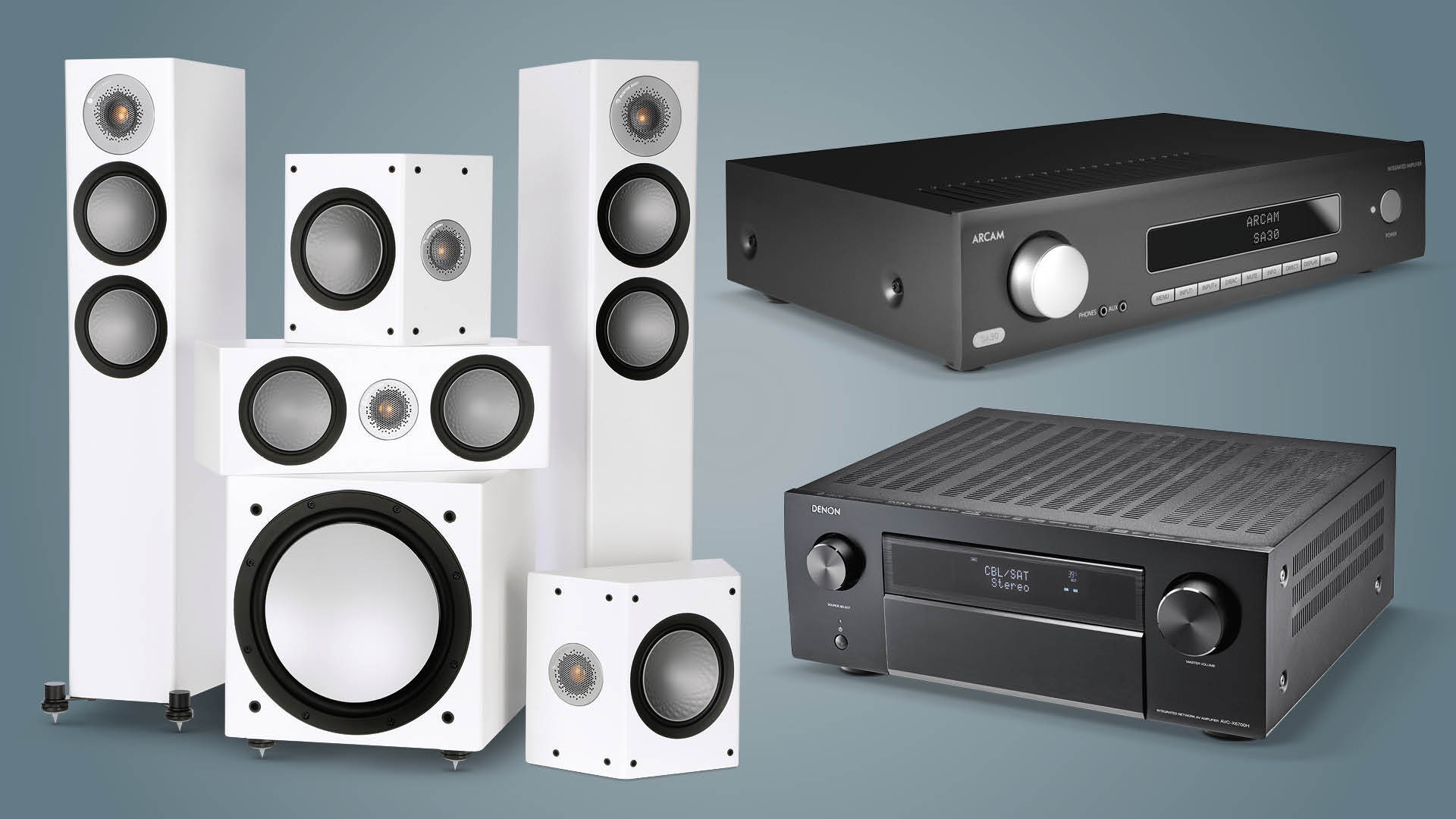
There’s no harm in hearing all you can, and no dealer can make a speaker sound better than it actually is.
It is possible, however, for a speaker to sound worse than it actually is – if it hasn’t been properly run in, say. It can take speakers hundreds of hours of play to reach their optimum level, but at the very least they will need 24 hours to warm up and loosen their joints.
And let us not forget that this is your opportunity to test the cables, speaker stands and interconnects you’ll use in your system. Don’t think of any of these as upgrades you can make later – least of all suitable support for any standmount speakers – or else you’ll only be paying for potential your speaker package can never realise.
…as is set-up
So, say you have your ideal package. You know it all fits because you measured your room before you started looking; you know it works well with the rest of your system because you took it with you or heard all-new components together in the shop; and you know you can always go back to the shop if anything goes wrong because you bought it from the dealer and didn’t try to find it cheaper online. Now what?
Well – once all feet, spikes and stands are fitted, of course – you can begin with some basic positioning. Don’t worry if you don’t get this right the first time; it usually takes a while to find the ideal arrangement and it’s always worth spending a bit of time experimenting with various speaker positions and angles.
Reading the literature that comes with your speakers is always a good place to start. Get that tape measure out to make sure distances are equal between corresponding channels, but again don’t be afraid to experiment with the arrangement later on.
The next, perhaps seemingly obvious, step is hooking each speaker up to your amp, making sure each channel is connected to the correct output, and black and red wires are all in the correct way round.
Nowadays, your AV receiver can largely guide you through the home cinema setup process thanks to its built-in calibration software, checking and helping you adjust speaker distances, levels, tonality and whatnot. As well as designating channels, including whether certain outputs are running to height or auxiliary surround speakers, almost all newer amps will run an automatic level check with a microphone included in the box. This will play a series of crackles and bleeps from each speaker in turn, repeating the process as you move the microphone through several listening positions, and optimise the level of each speaker as best it can. This is all detailed in our how to set up your AV receiver and get the best sound advice piece.
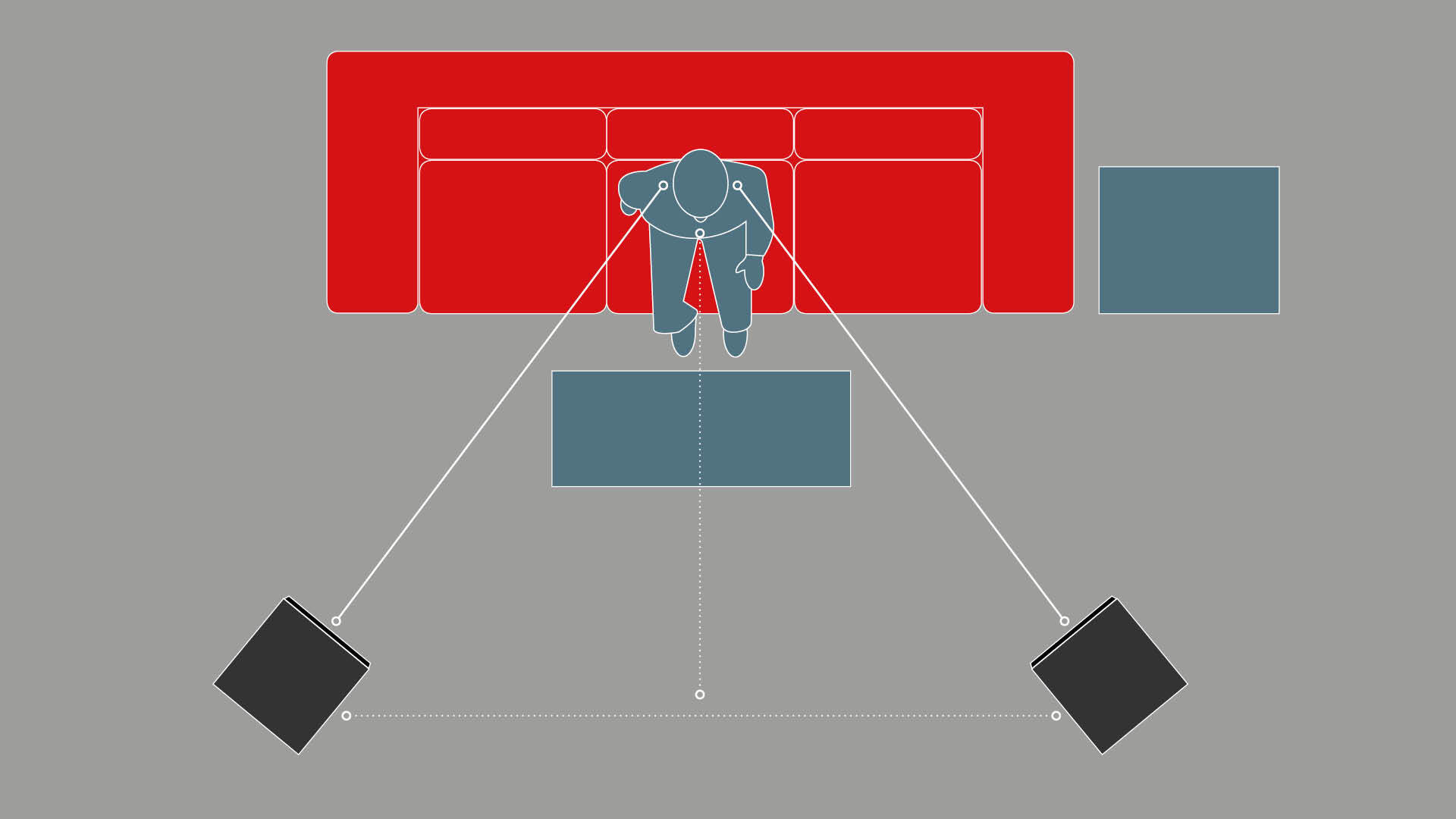
Again, though, this is a starting point, so don’t be surprised if later on you decide certain channels need to be louder or quieter. Often we find ourselves asking our subwoofer for a bit more welly, especially when we’re watching more action-driven films. Perhaps counterintuitively, playing music is a great way of tweaking the crossover and balance between the fronts and subwoofer so that the result is seamless. Also, check for peculiar outliers post-measurements – say, your front-left speaker is measured as being wildly further away from your seating position than your front-right speaker; you can always re-run the test or manually change it in the settings.
As for soundbars, let us reiterate an earlier point that just because they’re relatively unassuming 'lifestyle' boxes doesn't mean they can be chucked anywhere. If a soundbar is placed on an uneven surface, the action of the drivers moving backwards and forwards is likely to cause it to move and spoil the audio production. Make sure, then, that each foot has a solid placement on a TV stand, or the ‘bar is properly fixed to a wall using a dedicated wall-mounting kit (ideally one either provided in the box or recommended by the manufacturer).
Think about the length of the soundbar in accordance with the width of your TV, too – you want them to be similar ideally so that sound ‘fills’ the screen – and also its height; you don’t want your soundbar to block the bottom of your TV if it is placed in front of it. Our in-depth how to choose and set up a soundbar advice can guide you further.
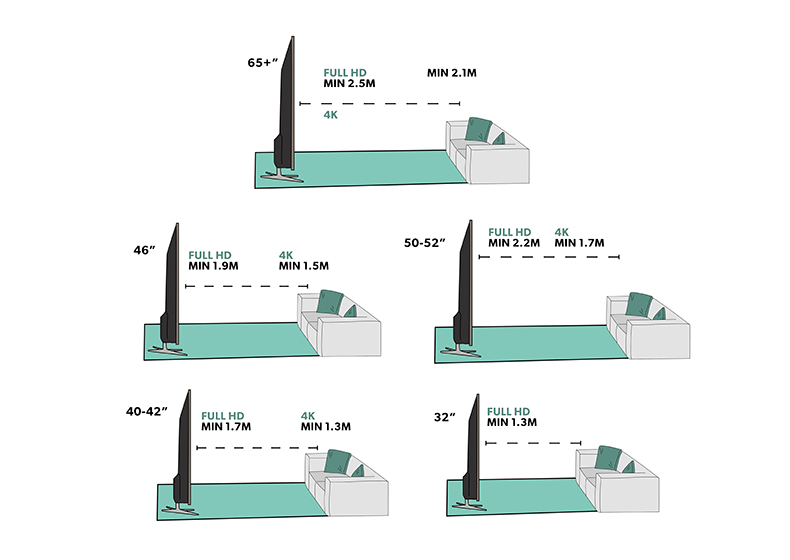
The most important thing about TV placement is the height, angle and distance at which it’s placed. Position it so that as many seating positions as possible are viewing the TV straight on; the screen should be at eye level when you’re seated; and you can use a simple formula to work out the ideal distance between your screen and viewing position based on your TV’s size and resolution.
Head to our how to set up your TV and get the best picture and how to calculate the right viewing distance for your TV articles for the ins and outs of optimal TV setup.
And there you have the major considerations when setting up a home cinema. Think about what components and configurations best suit your budget and room, and set them up optimally to get the best performance out of them. Hopefully this article – and other advice pieces linked to on this page – will help you decide on and build your perfect home cinema system. Because there are few things more satisfying for cinephiles and couch potatoes alike than to be transported into the movies from the comfort of your own home.
The best home cinema systems you can buy in 2024
And now it’s time to start building. To provide a few sparks of inspiration, we have built a handful of home cinema systems in the past year-ish with components that we know work together, having listened to them in our dedicated What Hi-Fi? test rooms. The below systems span various types of equipment and budgets, from affordable TV/soundbar pairings to more serious projector/AV receiver/speaker package setups.
Have a look to see if anything tickles your fancy, and start visualising your dream home cinema system.
Of course, you can build your own system and do your own compatibility research — and what better place to start than with the What Hi-Fi? Best Buy buying guides, which list the best products you can buy in each category, all tried and tested by our team of expert reviewers. As a handy shortcut, here are the best TVs, best projectors, best soundbars and best surround packages, expertly curated by our in-house reviews team.
LG OLED TV, AV amp & speaker package (mid-range)
The OLED65C4 is ideal as the starting point for a superb home cinema and gaming set-up; such as the one we have put together here. We marry this excellent new TV with a belting surround sound system, a capable 4K Blu-ray player and a next-gen games console to make the picture capabilities of this fine TV proud.
Sony projector, AV amp & speaker package (high-end)
If you've got the cash to splash, or you feel like dreaming for a few minutes, we think this is a pretty special way to get a serious home cinema. These components are either What Hi-Fi? Award winners – current or from years past – or very closely related to one, and they make up a brilliant-performing system to rival your local cineplex.
Compact and affordable TV & soundbar pairing (budget)
You don't have to spend tens of thousands to upgrade your home entertainment; a soundbar and decent TV picture alone can do wonders to evenings binging Netflix, providing you buy the right equipment, of course. Which brings us to this relatively budget TV and soundbar pairing.
JVC projector, AV amp & speaker package (high-end)
If you’ve got new-car money to spend on your home cinema, we are both envious and excited for you. Here we've partnered a brilliant 4K projector from JVC with a mighty JBL AV receiver and Dynaudio speaker package, all fed from an extremely talented Panasonic 4K Blu-ray player. Together, they make for a formidable home cinema set-up.
MORE:
Our expert pick of the best surround sound systems you can buy
How to upgrade your home cinema without spending a fortune
The What Hi-Fi? guide to the best films and TV shows to test your system
Get the What Hi-Fi? Newsletter
The latest hi-fi, home cinema and tech news, reviews, buying advice and deals, direct to your inbox.
Becky is the managing editor of What Hi-Fi? and, since her recent move to Melbourne, also the editor of the brand's sister magazines Down Under – Australian Hi-Fi and Audio Esoterica. During her 11+ years in the hi-fi industry, she has reviewed all manner of audio gear, from budget amplifiers to high-end speakers, and particularly specialises in headphones and head-fi devices. In her spare time, Becky can often be found running, watching Liverpool FC and horror movies, and hunting for gluten-free cake.

